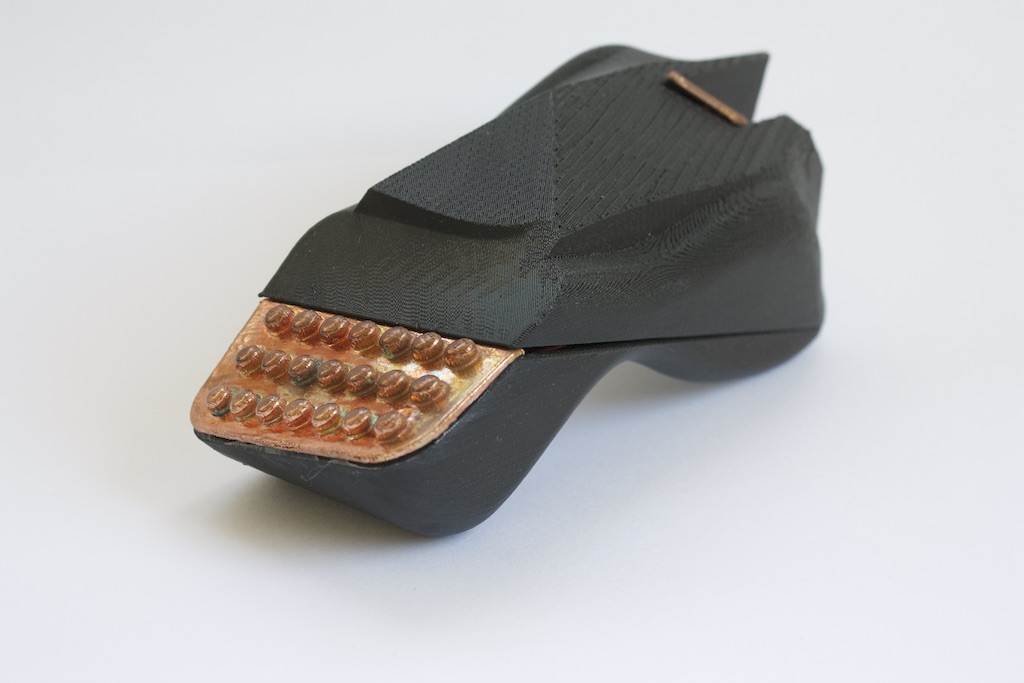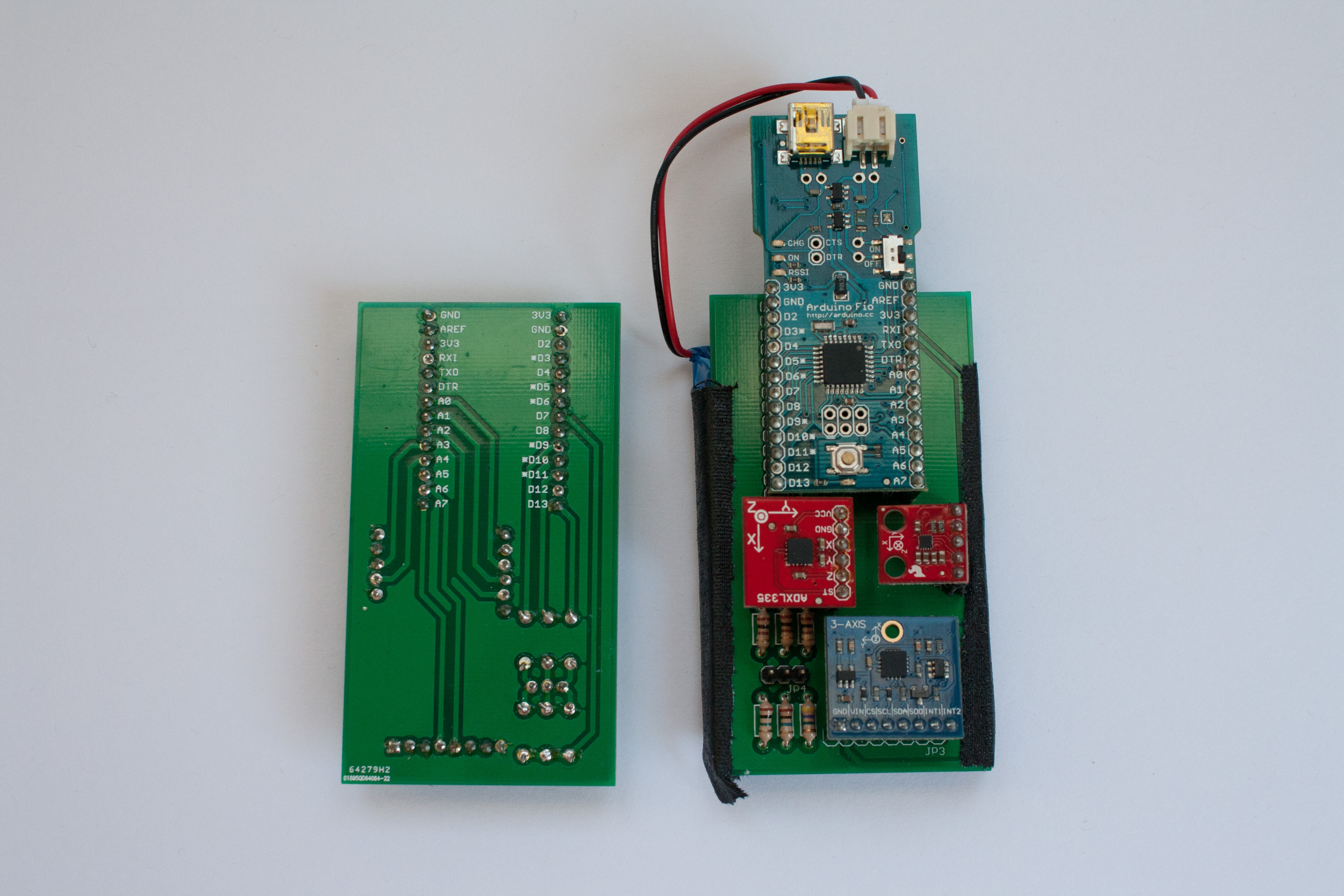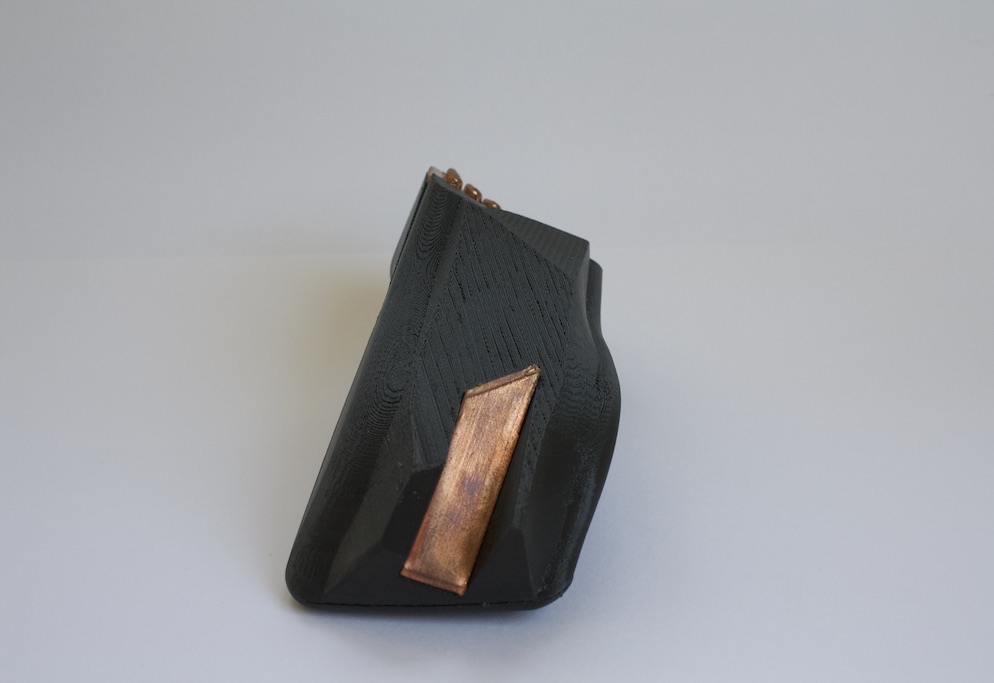Fluid
ARDUINO
XBEE
EAGLE
ARDUINO
XBEE
EAGLE
Fluid is a wireless, gestural, and touch sensitive interface designed to be a combination of a hand-sculpture and a musical instrument.






The combined 9-axis sensor was the core of the gestural capabilities of the Fluid. Using a Kalman Filter, I was able to transform the separate pieces of data to determine the Fluid’s orientation and how it was being handled. It could detect if it was being shaken, twisted, tipped, or flipped. To see it in action, please view the video of a performance I made using the Fluid. This piece, entitled Movement, used a combination of score-following, discrete note control, as well as continuous audio effect control. The score-following was attached to a flicking gestured where as I flicked the Fluid left/right you can hear the bass note change and when I flick it forwards or backwards, the higher harmony note changes. The continuous audio effect can be heard as a sweeping filter on the sustained notes. Then, as I touch the front sensor, you can hear a melodic arpeggiator that is triggered while my finger is pressed on it. In this mode, the tilt of left to right becomes pitch control based on the angle.
Interface Show performance using the Fluid, CalArts
Thanks to Andrew Capeluto for all of his help in designing and inspiring this project and to Gabriel Rey-Goodlatte for performing with me.
COLIN HONIGMAN CREATIVE TECHNOLOGIST LOS ANGELES